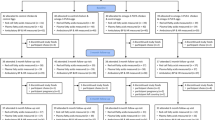Abstract
The n−3 fatty acids from fish appear to be more efficacious, in terms of cardioprotection, than equivalent amounts provided as capsules. Volunteers were given, for 6 wk, either 100 g/d of salmon, providing 383 mg of EPA and 544 mg of DHA, esterified in glycerol lipids, or 1 or 3 capsules of fish oil/d, providing 150 mg of EPA and 106 mg of DHA or 450 mg of EPA and 318 mg of DHA, as ethyl esters. Further, we reevaluated data from a previous study carried out with the same design, i.e., with 3 and 6 capsules/d of fish oil, providing 1290 and 2580 mg/d EPA and 960 and 1920 mg/d DHA. Marked increments in plasma EPA and DHA concentrations (μg/mg total lipid) and percentages of total fatty acids were recorded at the end of treatment with either n−3 capsules or salmon. Net increments of EPA and DHA in plasma lipids were linearly and significantly correlated with the dose after capsule administration. Further, increments in plasma EPA and DHA concentration after salmon intake were significantly higher than after administration of capsules. The same increments would be obtained with at least two- and ninefold higher doses of EPA and DHA, respectively, if administered with capsules rather than salmon. We provide experimental evidence that n−3 fatty acids from fish are more effectively incorporated into plasma lipids than when administered as capsules and that increments in plasma concentrations of EPA and DHA given as capsules are linearly correlated with their intakes.
Similar content being viewed by others
Abbreviations
- cps:
-
capsule
- FA:
-
fatty acids
- PL:
-
phospholipids
- TL:
-
total lipids
References
Halliwell, B. (2000) Lipid Peroxidation, Antioxidants and Cardiovascular Disease: How Should We Move Forward? Cardiovasc. Res. 47, 410–416.
Visioli, F., Keaney, J.F., and Halliwell, B. (2000) Antioxidants and Cardiovascular Disease: Panaceas or Tonics for Tired Sheep? Cardiovasc. Res. 47, 409.
Nestel, P.J. (2000) Fish Oil and Cardiovascular Disease: Lipids and Arterial Function, Am. J. Clin. Nutr. 71, 228S-231S.
von Schacky, C. (2000) n−3 Fatty Acids and the Prevention of Coronary Atherosclerosis, Am. J. Clin. Nutr. 71, 224S-227S.
Burr, M.L., Fehily, A.M., Gilbert, J.F., Rogers, S., Holliday, R.M., Sweetnam, P.M., Elwood, P.C., and Deadman, N.M. (1989) Effects of Changes in Fat, Fish, Fibre Intakes and Death and Myocardial Reinfarction: Diet and Reinfarction Trial (DART), Lancet 2, 757–761.
Daviglus, M.L., Stamler, J., Greenland, P., Dyer, A.R., and Liu, K. (1997) Fish Consumption and Risk of Coronary Heart Disease. What Does the Evidence Show? [Editorial], Eur. Heart J. 18, 1841–1842.
Daviglus, M.L., Stamler, J., Orencia, A.J., Dyer, A.R., Liu, K., Greenland, P., Walsh, M.K., Morris, D., and Shekelle, R.B. (1997) Fish Consumption and the 30-Year Risk of Fatal Myocardial Infraction, N. Engl. J. Med. 336, 1046–1053.
Cobiac, L., Clifton, P.M., Abbey, M., Belling, G.B., and Nestel, P.J. (1991) Lipid, Lipoprotein, and Hemostatic Effects of Fish vs. Fish-Oil n−3 Fatty Acids in Mildly Hyperlipidemic Males, Am. J. Clin. Nutr. 53, 1210–1216.
Tremoli, E., Maderna, P., Marangoni, F., Colli, S., Eligini, S., Catalano, I., Angeli, M.T., Pazzucconi, F., Gianfranceschi, G., and Davi, G. (1995) Prolonged Inhibition of Platelet Aggregation After n−3 Fatty Acid Ethyl Ester Ingestion by Healthy Volunteers Am. J. Clin. Nutr. 61, 607–613.
Folch, J., Lees, M., and Sloane Stanley, G.H. (1957) A Simple Method for the Isolation and Purification of Total Lipids from Animal Tissues, J. Biol. Chem. 226, 497–509.
Marangoni, F., Angeli, M.T., Colli, S., Eligini, S., Tremoli, E., Sirtori, C.R., and Galli, C. (1993) Changes of n−3 and n−6 Fatty Acids in Plasma and Circulating Cells of Normal Subjects, After Prolonged Administration of 20∶5 (EPA) and 22∶6 (DHA) Ethyl Esters and Prolonged Washout, Biochim. Biophys. Acta 1210, 55–62.
Marckmann, P., Bladbjerg, E.M., and Jespersen, J. (1997) Dietary Fish Oil (4 g daily) and Cardiovascular Risk Markers in Healthy Men, Arterioscler. Thromb. Vasc. Biol. 17, 3384–3391.
Gurr, M.I., and James, A.T. (1975) Lipid Biochemistry, Chapman & Hall, London.
Author information
Authors and Affiliations
Corresponding author
About this article
Cite this article
Visioli, F., Risé, P., Barassi, M.C. et al. Dietary intake of fish vs. formulations leads to higher plasma concentrations of n−3 fatty acids. Lipids 38, 415–418 (2003). https://doi.org/10.1007/s11745-003-1077-x
Received:
Accepted:
Issue Date:
DOI: https://doi.org/10.1007/s11745-003-1077-x




